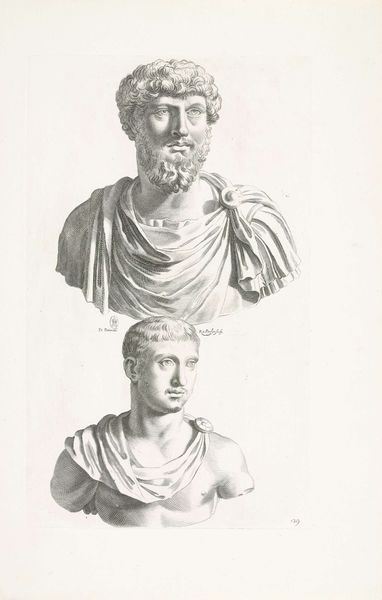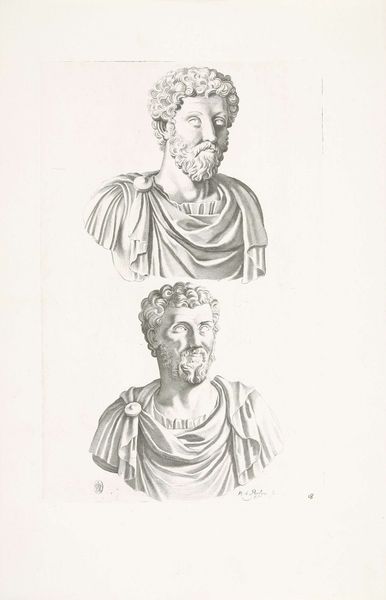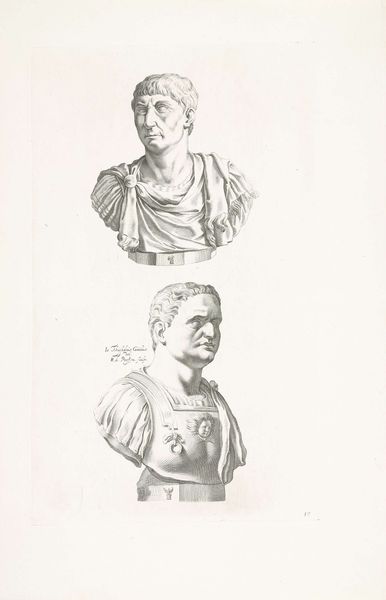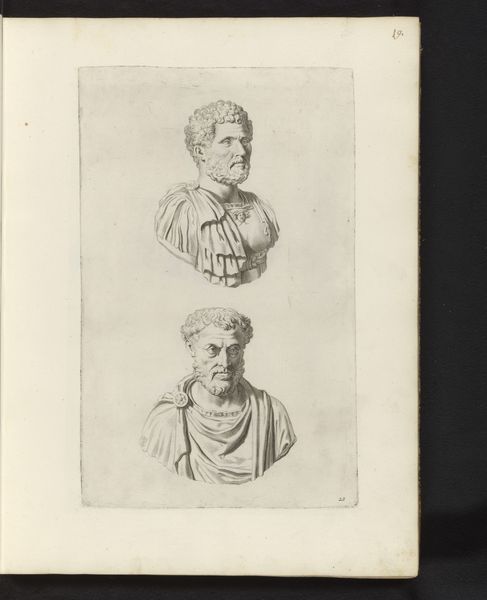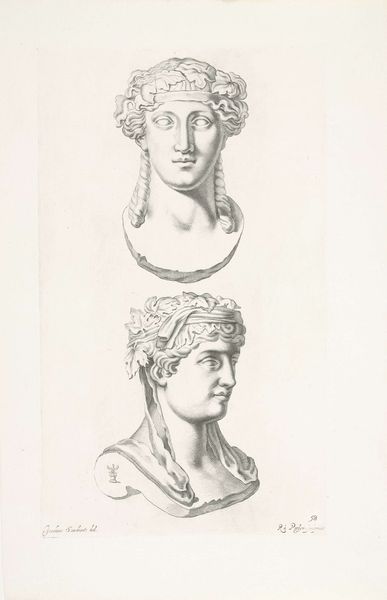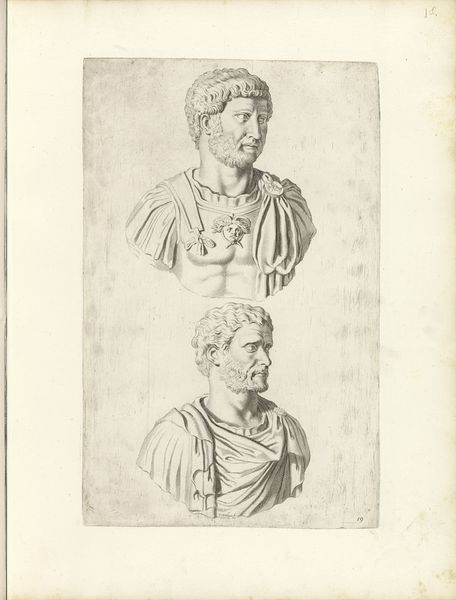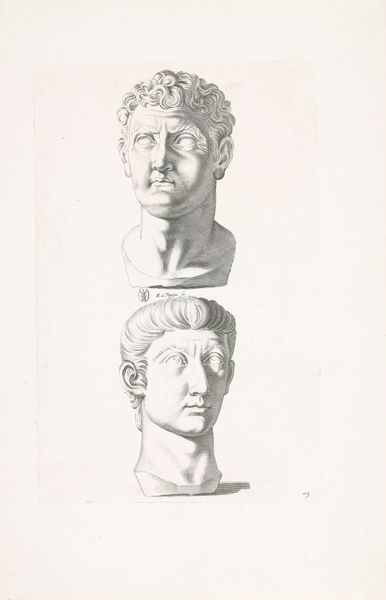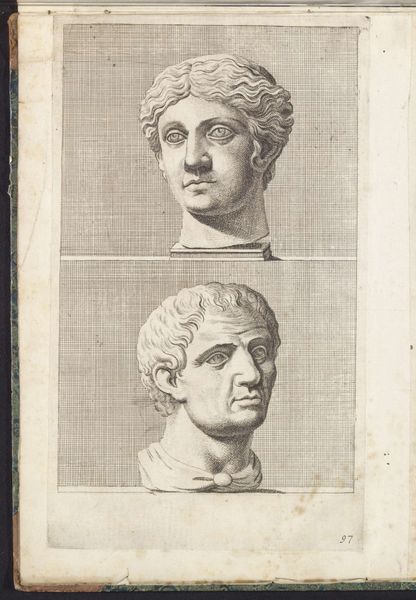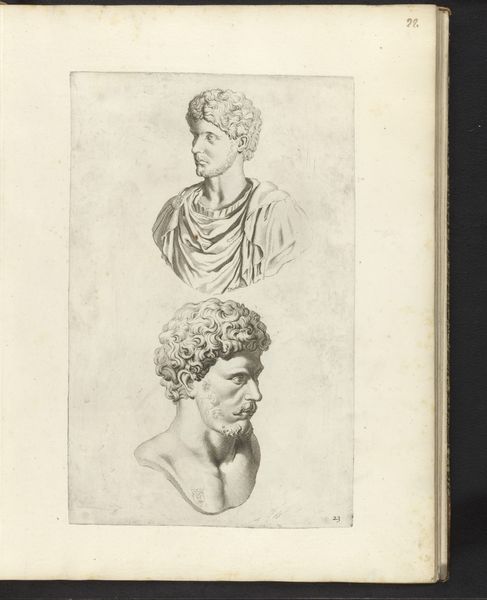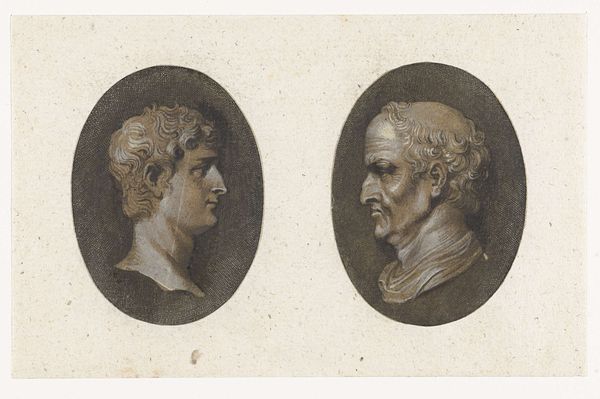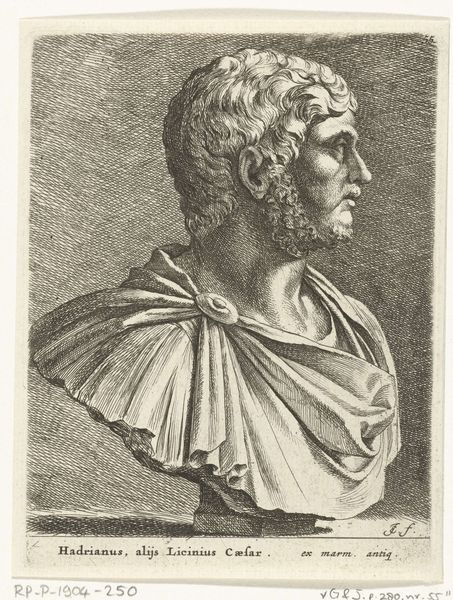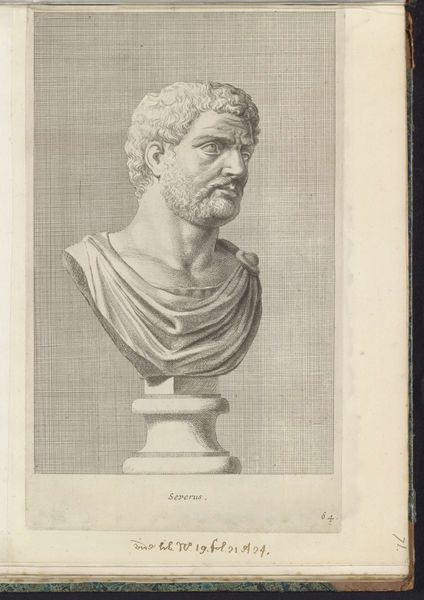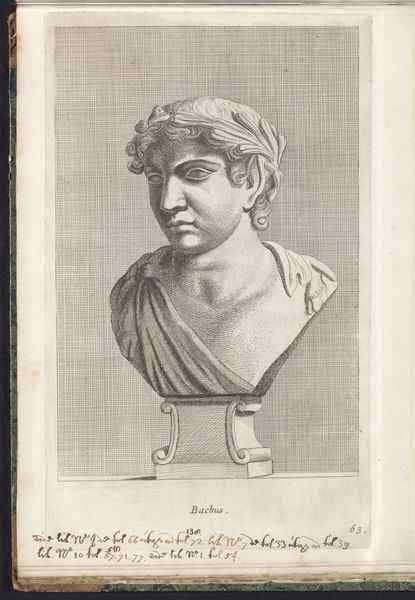
engraving
#
portrait
#
baroque
#
greek-and-roman-art
#
portrait drawing
#
engraving
Dimensions: height 361 mm, width 239 mm
Copyright: Rijks Museum: Open Domain
Editor: So, this engraving is called "Two Portrait Busts of Emperor Tiberius" by Reinier van Persijn, created around 1640. The detail is quite remarkable; I find it compelling how two depictions of the same person can evoke such distinct impressions. What strikes you about these images? Curator: Indeed, it's fascinating how the artist captures Tiberius, presenting us with contrasting interpretations, yet both rooted in classical ideals. Note the meticulous attention to detail characteristic of baroque portraiture, striving for realistic yet idealized features. This, however, begs a question – how reliable are images across time? What filters shape cultural memory and how do we perceive these historical figures now versus then? Editor: I see what you mean! The lower bust, in particular, has a stern expression, while the upper one looks…almost peaceful? Curator: Precisely. These images carry significant weight due to Tiberius' controversial history. Remember, visual symbols are not neutral; the drapery, hairstyle – each element conveys power, status, and, in this case, an echo of Roman grandeur, but through a 17th-century lens. This speaks volumes about how later eras perceived and reinterpreted classical authority. How do you think that perception is colored by our contemporary awareness? Editor: It’s interesting to think about how we're still shaping our understanding of the past, and how even in 1640 they were actively reshaping their past too. I appreciate the deeper understanding of portraiture you’ve provided! Curator: My pleasure. It shows how iconography acts like a mirror, reflecting not only its subject, but also the values of the time that created it.
Comments
No comments
Be the first to comment and join the conversation on the ultimate creative platform.
